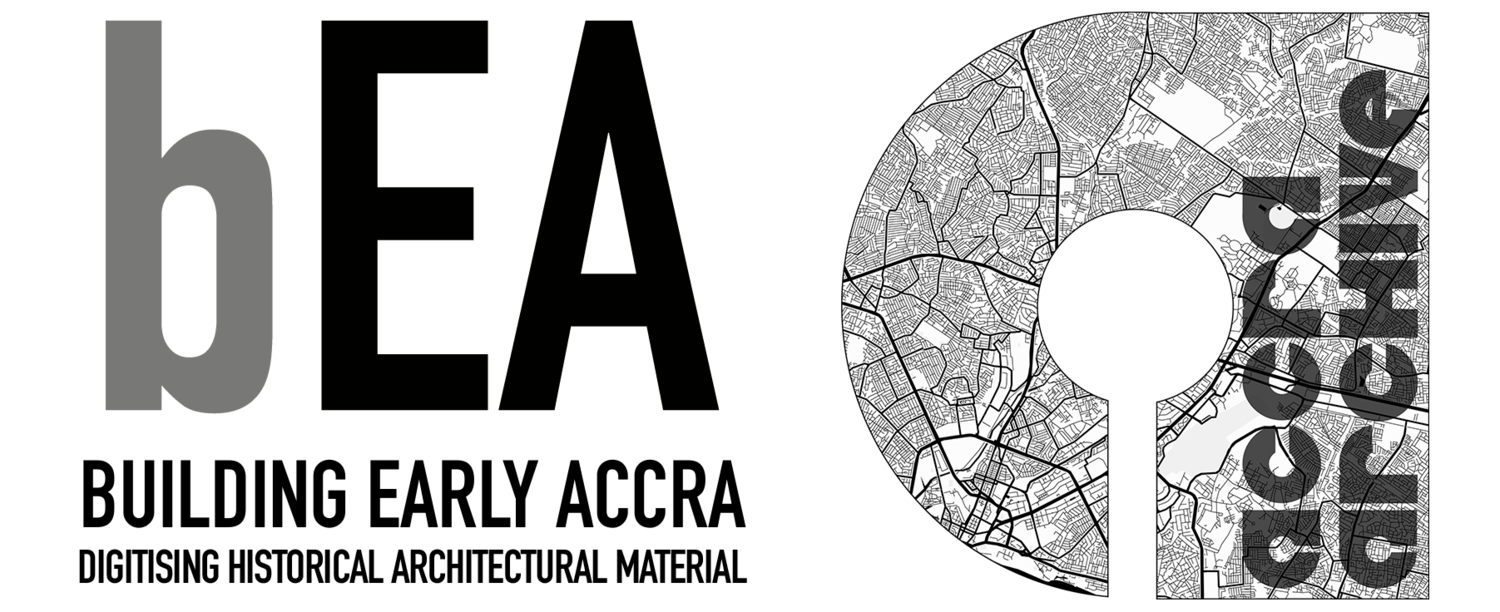Preserving Ghanaian Architecture History
How the building Early Accra (bEA) project came to be.
Written by: Kuukuwa
April 2015, Accra
I am interested in architecture of Africa: the historical and contemporary; the theories and the practices of building; the professionalised and formal, and that which falls outside of “formal” categories. In architecture school, we were not taught much African Architecture History beyond pyramids in Egypt and a few other “ancient wonders”, and I had always wanted to find out more about what and how we built in the past. I had a passion to study, record and document the histories of architecture in Ghana in particular because that’s where I come from and what I know most. It is this desire to study Ghanaian architectural history that led me to do an MSc in African Studies at the University of Oxford.
In April of 2015, I was doing fieldwork in Accra for my dissertation and needed to find some data to answer some of the research questions I had. There was a gap in the academic literature about the how the architecture/ building design profession came to be in Ghana, and I was determined to fill it with my research.
I had no idea where to find any such data as there are no historical architectural records beyond those of the Ghana Institute of Architects, which is a relatively young institution in the context of the historical work I wanted to do. This led to weeks of connecting with new people, and reconnecting with old classmates and friends as I sought to find someone who knew whether there were any really old documents about building in Ghana.
A series of happy coincidences, frustrating experiences and long days led me to the Accra Metropolitan Assembly (AMA). I was fortunate to have a former classmate - Ivy Tetteh - who was working there at the time as an architect and this made things so much easier. I thought the AMA might have old architectural drawings, and luckily they did! Ivy introduced me to Mr Musah who is in charge of the old drawings and he helped me access the files I needed for my research.
The documents were in a bad state. The room in which they were kept was dirty, dusty, damp and cockroach + rat-infested. These precious documents which held some memories of the colonial city and possible even before were in danger of being destroyed due to neglect. I wanted to do something about it, so other students, researchers and pursuers of knowledge could also access these documents in the future.
When I got back to Oxford, I spoke to my supervisor - Jan-Georg Deutsch - about this archive and we discussed the possibilities of preserving and digitising it. One of the resources he mentioned was The British Library. I did further research and came across their Endangered Archives Programme which gives grants towards digitising endangered archival material. I applied, and though my application experience is a long story for another day, the rest is history.
So that’s how this building Early Accra Project came about.

